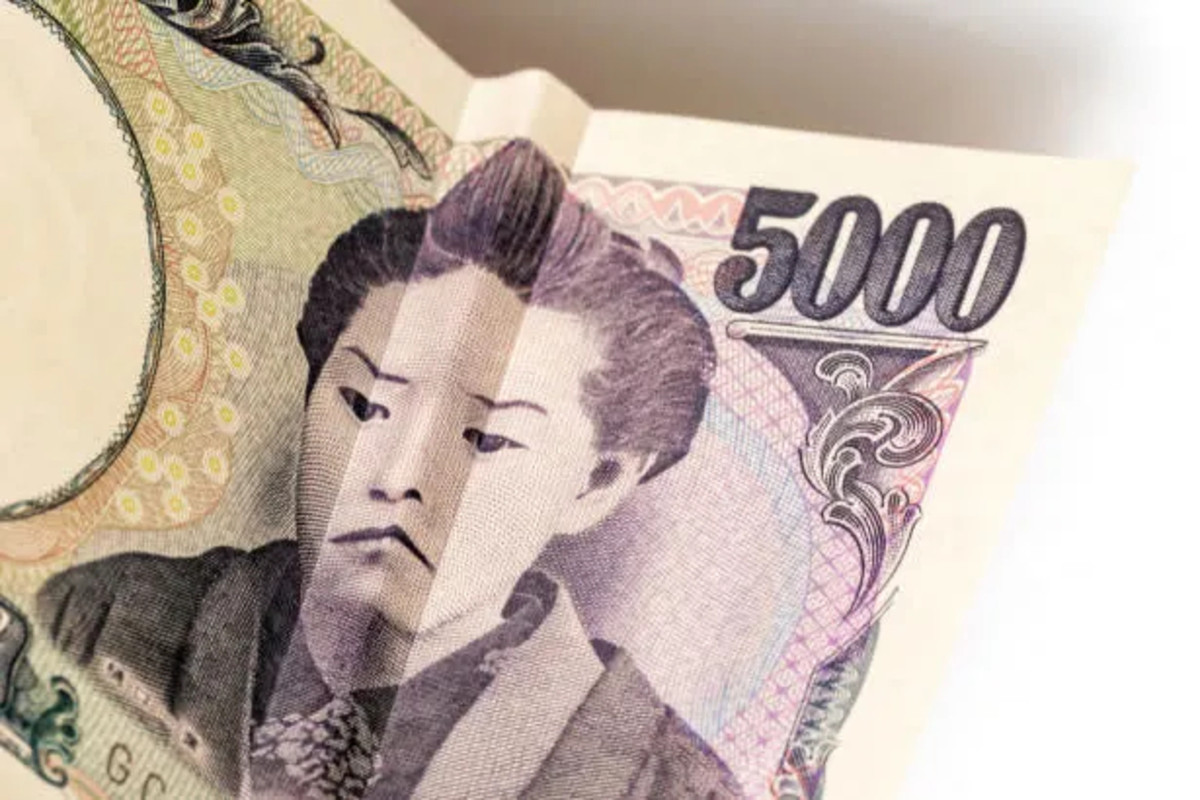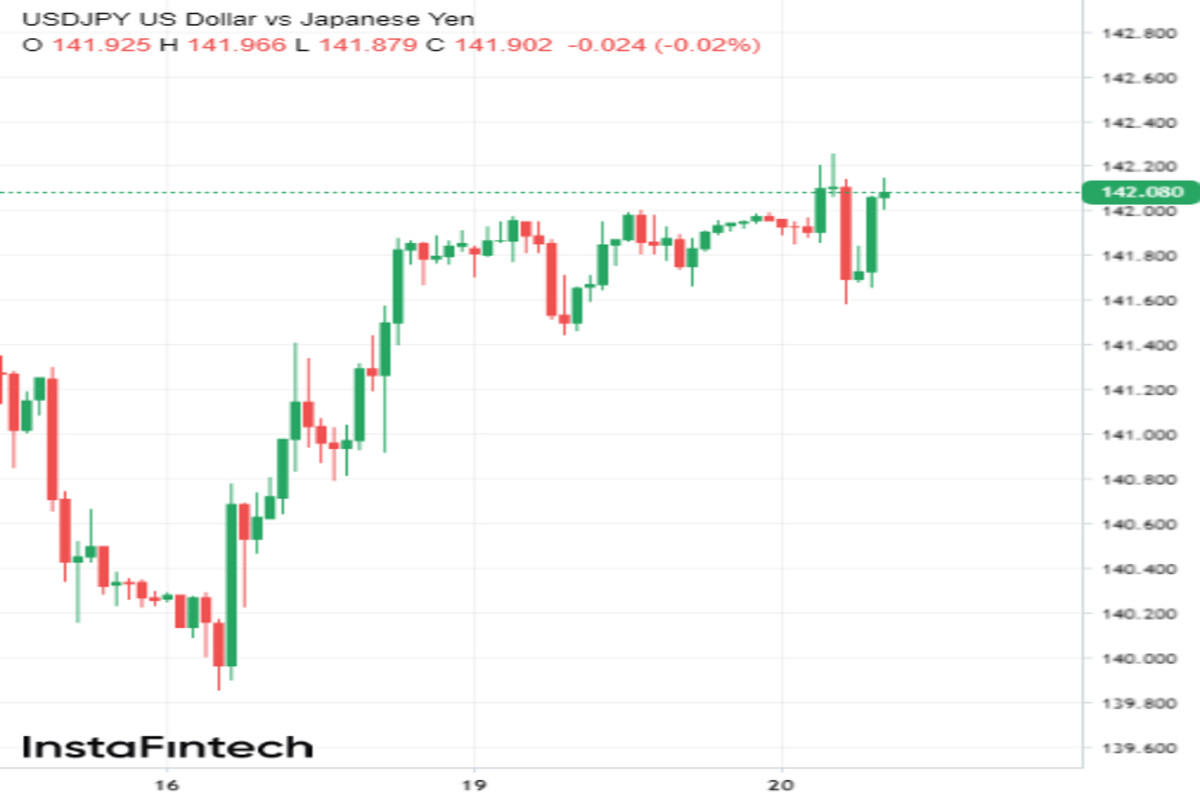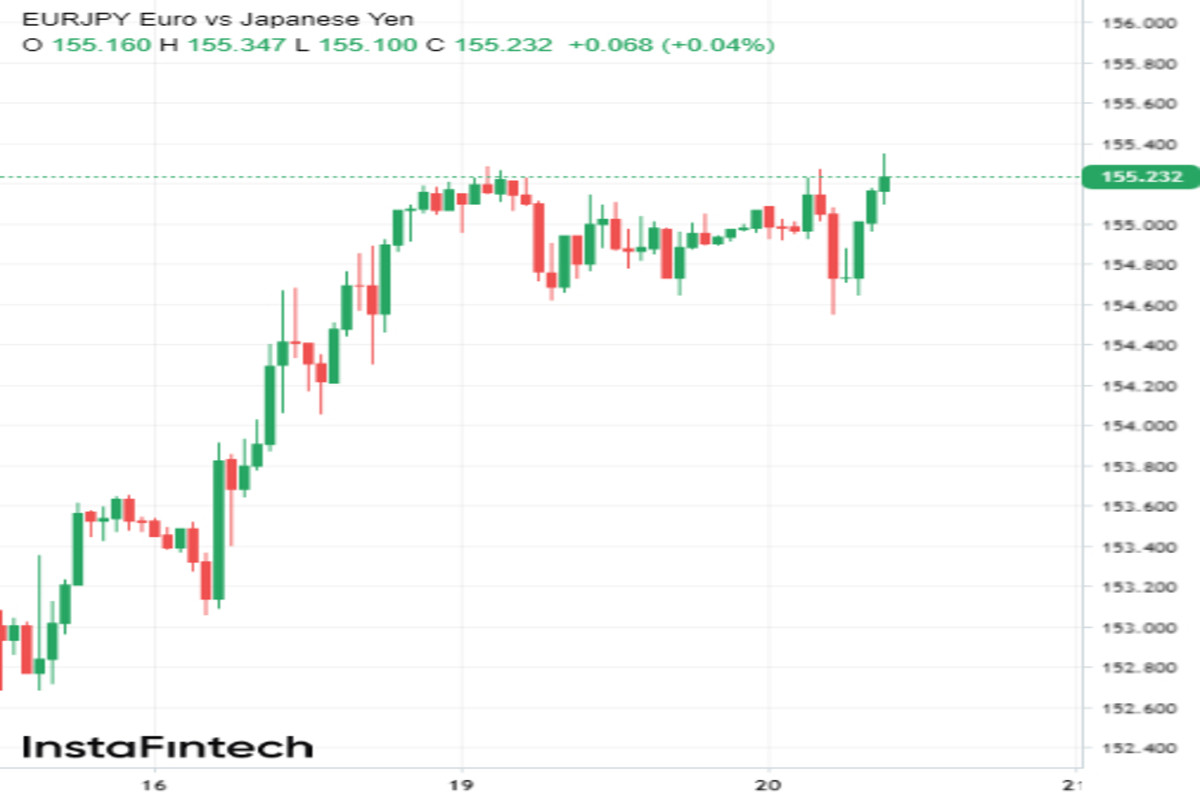
The recent sharp fall of the Japanese currency has elicited strong deja vu sentiments in the financial world. Echoing the trend from last year, the yen currently holds the unenviable position of the weakest player among the G10 currencies. The Bank of Japan's relentless commitment to its dovish monetary policy is primarily to blame. Let's delve into where the yen might be heading and whether it stands a chance of recovery.
JPY under pressure
The current month appears to be the most unfortunate for the Japanese currency since the start of the year. The yen noticeably depreciated last week following meetings of the US Federal Reserve and the European Central Bank (ECB). However, the Bank of Japan (BOJ) delivered the most crushing blow, affirming its commitment to an ultra-loose monetary policy.
At its June meeting held between June 15 and 16, the Bank of Japan decided to keep the interest rate in negative territory (-0.1%) to continue stimulating the economy.
For comparison, the equivalent American interest rate is currently standing in the range of 5%-5.25%, and in Europe, the key rate was raised to 4% last week.

Both the Federal Reserve and the ECB are prepared to continue their aggressive policies as inflation continues to exceed their respective targets.
The possibility that the BOJ's counterparts might raise rates even further, thereby widening the already wide gap with the Japanese rate, exerted substantial downward pressure on the yen.
Over the past week, the yen plummeted by 300 points against the euro, hitting a 15-year low (155.1). Against the dollar, the yen depreciated by more than 100 points, testing the lowest level since November 2022 (141.7).

USD/JPY wasn't hit as hard as EUR/JPY simply because the Fed paused its current tightening cycle in June. This decision limited the yen's pace of decline against the dollar but couldn't prevent significant losses.
This week, the USD/JPY bulls continue to dominate. In the Asian session on Tuesday, buyers managed to break above the level of 142 and test a new 7-month high of 142.26.
The dollar is strengthening against the yen ahead of Fed Chair Jerome Powell's testimony to the US Congress. Powell is expected to present a semiannual monetary policy report on Wednesday and Thursday.
Investors betting on a stronger US currency hope that Powell will outline more clearly the prospects for further rate hikes in the US.
The latest dot plot published by the Federal Reserve last week revealed that FOMC members significantly strengthened their hawkish forecasts. They now expect the interest rate to rise by at least another 50 basis points by the end of the year, reaching 5.6% as compared to the previous consensus of 5.1%.
Should the head of the Fed confirm the possibility of rate hikes in the coming days, citing sustained inflation, this would most likely further convince the market that the US central bank will resume its interest rate hikes at its next meeting in July. In such a scenario, the yen could fall even further against the dollar.
Analysts also expect the yen's downward trend to continue against other currencies this week. Against the euro, the yen is poised to fall further on hawkish comments from members of the European Central Bank (ECB).
Market participants anticipate remarks from ECB officials such as Andrea Enria, Elizabeth McCaul, and Luis de Guindos. If these officials also endorse a rate increase in July, following in the footsteps of their colleagues Philip Lane and Isabel Schnabel who did so yesterday, this could push the EUR/JPY pair higher.
However, the key short-term risk factor for the Japanese currency is the upcoming Bank of England's monetary policy meeting. If the central bank raises interest rates again on Thursday, the yen is in for an inevitable fall against the British pound.
Last week, the yen fell to a 7-year low against the sterling, driven by the anticipation that the interest rate difference between Japan and the UK could widen. An increase in monetary divergence is likely to cause a stronger decrease in the yen.
As we can see, the Japanese currency is in a dire state. The yen's strengthening indicator against its main competitors, as calculated by Deutsche Bank, hit a record low, falling to a 20-year low on Monday.
ING analysts believe that the yen will continue to depreciate in the near term, despite the robust recovery of the Japanese economy. The decisive price-forming factor for the yen will continue to be the BOJ's monetary policy.
"If the BOJ maintains its dovish stance while other regulators continue to raise rates, the yen will depreciate even further," experts believe.
What can support JPY?
Ironically, the yen has the greatest chance to strengthen against its main competitors only if it first shows an extreme decrease. In such a case, Japanese authorities are likely to perform a currency intervention as they did in October last year when the yen plunged to a 32-year low of 152 against USD.
The recent decline of the yen also prompted an immediate response from the Japanese government, albeit only verbal so far. Financial authorities warn speculators that appropriate measures will be taken if excessive currency fluctuations continue.
However, most analysts are confident that actual market intervention is unlikely at present.
"The risks may become more real when USD/JPY quickly surpasses the so-called red lines. I believe that the levels of 145 and 150 could be considered as such now," shares currency strategist Tsutomu Soma.
Another factor that could trigger a reverse trend in the Japanese currency is an unexpected hawkish move by the BOJ.
"Of course, the Bank of Japan is unlikely to raise interest rates in the near future, but there are assumptions that it may adjust its yield curve control policy as early as July. The ambiguity of Kazuo Ueda, head of the BOJ, supports this scenario. After the June meeting, he didn't give a definite answer to the question about possible changes in the YCC, instead stating that the central bank will have to balance the 'pros and cons' of the policy," notes Kenny Fisher.
At the end of 2022, the Bank of Japan shocked markets by increasing the maximum range of 10-year government bond yield fluctuations from 0.25% to 0.50%, causing a sharp rise in the yen's value.
Considering that the yen is currently trading at a 7-month low against the dollar, many experts believe that this could force the Bank of Japan to make another adjustment to its yield curve control mechanism.
Such a move would likely reduce the Japanese currency's recent losses against its rivals, but the overall trend for the yen would likely remain bearish.
According to most strategists, the yen will remain vulnerable until the Bank of Japan starts stabilizing its monetary policy. This turbulent time underlines the balancing act central banks must play to navigate their currencies through uncertain market conditions.





















